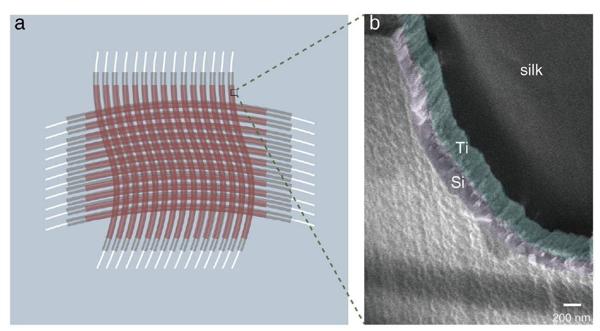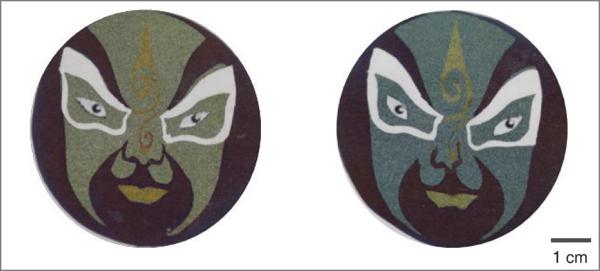Textile dyeing plays an indispensable role in our daily life, enriching people's choices of the textile and satisfying our desire for aesthetics. In general, traditional textile dyeing is mainly based on chemical pigments. However, the old-fashioned technique may lead to environmental pollution and health concerns. Fortunately, structural colors found in the natural world inspire people to utilize nanostructures to achieve coloration meanwhile avoid the abovementioned problems. Structural colors originate from the interaction of light with photonic structures whose feature sizes are comparable to visible wavelengths. These interactions include interference, diffraction, scattering, or their combination.
Silk, composed of protein, is an eco-friendly biological material with many notable properties such as breathability, hygroscopicity, and elegant shine. Being popular in people's daily life for thousands of years and thus abundantly available on the earth, natural silk is white and usually dyed by chemical pigments in the past to bring out the individual and cultural identities. The research group of Photonic Bandgap from Fudan university proposed the method of structural-colored silk as a plausible substitute of the traditional dyed silk. The thin-film interference effect was applied to white silk fabrics. Their work was published in Chinese Optics Letters, Volume 19, Issue 5, 2021 (J.Chu, et al., Structural-colored silk based on Ti–Si bilayer)

Illustration of the proposed bilayer for realization of structural color on white silk
In order to construct structural color coatings on silk, the research team deposited Ti–Si bilayers on white silk using e-beam evaporation. Ti was chosen as the adsorbed and adhesion layers because of its unique properties so the research team could adjust the saturation of the color by controlling the thickness of the Ti layer. On the one hand, Ti has a high absorption rate in the visible frequency, which is important to improve the color saturation. On the other hand, Ti is beneficial to increase the adhesion between silk fabrics and the Si layer. The Si layer was deposited on the Ti layer, and the hue could be regulated by changing the thickness of the Si layer. The large refractive index in visible wavelength of Si guarantees the capability of our structure to obtain an obvious variation in hue by slightly changing thickness of the Si layer, which is essential for cost-effective fabrication.

Structural-colored Beijing Opera Facial Makeup patterns on white silk
To further evaluate the mechanical stability of the structural color coatings considering potential practical applications, color fastness through rubbing and stretching was tested. The result shows almost no difference between corresponding reflectance spectra, and demonstrates the structural-colored silk with good durability, indicating the potential practical applications of the structural-colored silk in the near future. Compared with traditional textile dyeing, the proposed method could be non-toxic and eco-friendly, and the color could be tuned precisely.


